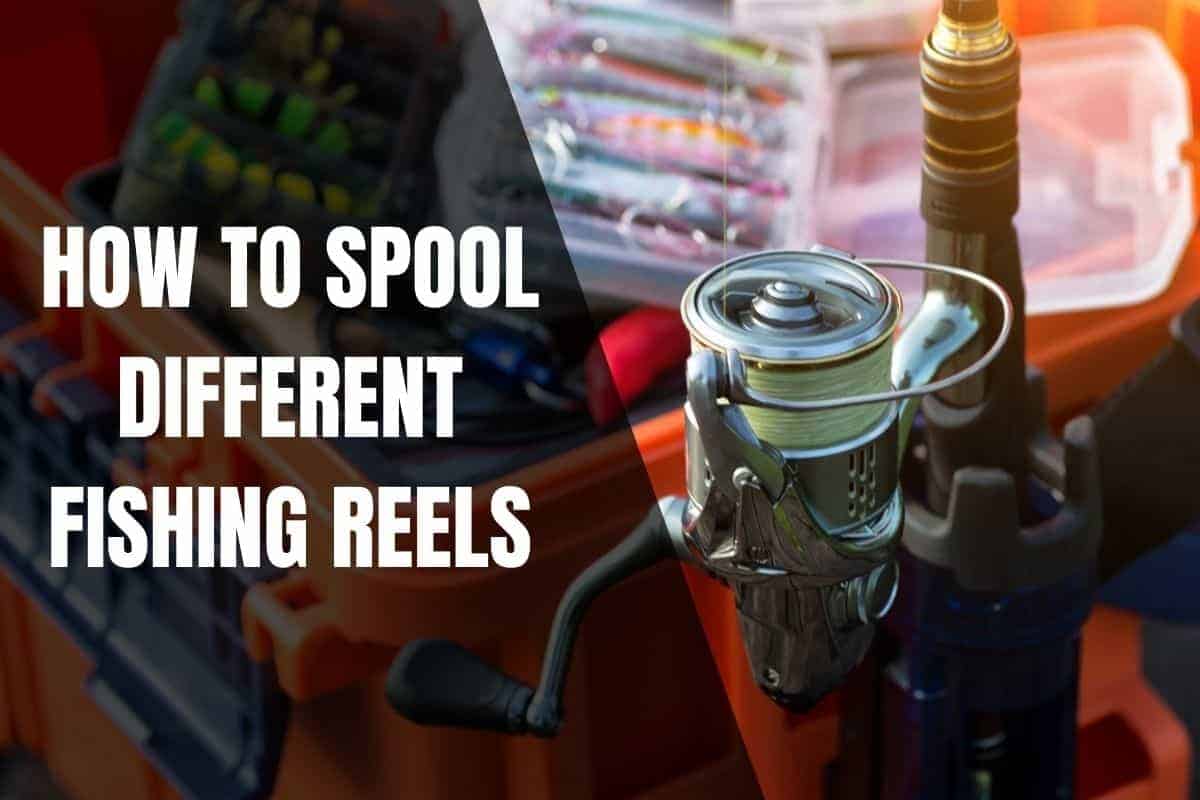Fishing is one of my favorite pastimes and a perfect way to spend a lazy summer day by the lake. But before you can get out on the lake and catch some whoppers of your own, every angler will have to prepare by spooling a fishing reel.
Reels come in all shapes and sizes, and spooling a fishing reel requires knowledge of techniques.
Spooling a line feels like a daunting task to new and old anglers. So let’s look at the techniques for spooling reels so you can spend less time dealing with tangles and more time catching fish.

The Most Common Knot When Tying Fishing Line To A Reel
Learning how to spool any fishing reel starts with learning how to tie the most common fishing knot used to tie your fishing line to your reel.
The Arbor Knot is by far the most commonly used knot in many fishing circles as the best way to tie your line to your reel. This knot is loved by many for its simplicity and easy to tie making it great for any angler at all levels.
How to Spool a Spinning Reel
Once you’ve chosen the type of line you’ll use, you’re ready to begin spooling a spinning reel. Begin by opening the bail of the reel. The bail is the wire handle on the reel that flips up and down. Flip it up to open it and remove any old line on your reel.
Take the line from its spool and feed it through the circular guides on your rod. These guides keep your line in place while fishing.
Using an arbor knot or double-overhand knot, tie the line to the reel’s spool. Once the line is tightly secured, use scissors to cut off any excess line from the knot to prevent future tangles.
Close the bail by flipping it down and begin to spool the reel. Place the line on the ground with the label facing up, which is an important step, as you need to make sure the line enters the reel properly to avoid twists in the spooling process.
If you have a second person available, they can also hold the line to help prevent twists and maintain tension.
Gently pinch the line about a foot away from the reel and begin slowly reeling to spool the line. Be sure to maintain tension, as it helps prevent twists from forming.
After around 20 reels, check the reel to see if any twists are forming. If you see any twists, unspool the line and readjust the position of the line.
If the line is spooling correctly, continue reeling until the line is about 1/8” from the rim of the reel. Any more will cause issues with tangling and casting down the road. Cut the line from its spool and then secure it. You’ve officially finished spooling a spinning reel and are ready to begin fishing.
How to Spool a Spincast Reel
Spooling a spincast reel works almost the same as spooling a spinning reel. The main difference is removing the cover from the reel before you can tie the line to it. Then follow the same procedure as the spinning reel to finish spooling a spincast.
How to Spool a Baitcast Reel
Spooling a baitcaster is best done with a partner, though you can do it alone. Begin by threading the line through all the rod’s guides and into the reel’s guide. Next, tie the line to the spool using an arbor or double-overhand knot.
If you have a partner, have them hold a pencil in the middle of the spool of the line so it can freely spin. Both participants should apply slight tension and slowly begin reeling to spool the baitcaster. Ensure the line is coming onto the reel the same way it is coming off the spool.
Whereas spinning reels are forgiving on the amount of fishing line to use, anglers using baitcasters must decide the amount of the line to use. Not using enough will reduce cast distances, while too much will make casting difficult. The general rule of thumb is to allow 1/8” of the spool to be visible and free of line.
How to Spool a Fly Reel
Spooling a fly fishing reel starts with spooling the backing to the reel. Tie the backing to the reel with a Uni Knot. Next, spool it onto the reel with a similar method to the baitcaster. Once you have enough backing, you will tie it to the fly line. Finish the process by reeling the fly line onto the reel’s spool.
The trickiest part of spooling a fly fishing reel is determining how much backing to use, which takes some trial and error, but you will have a feel for it over time.
